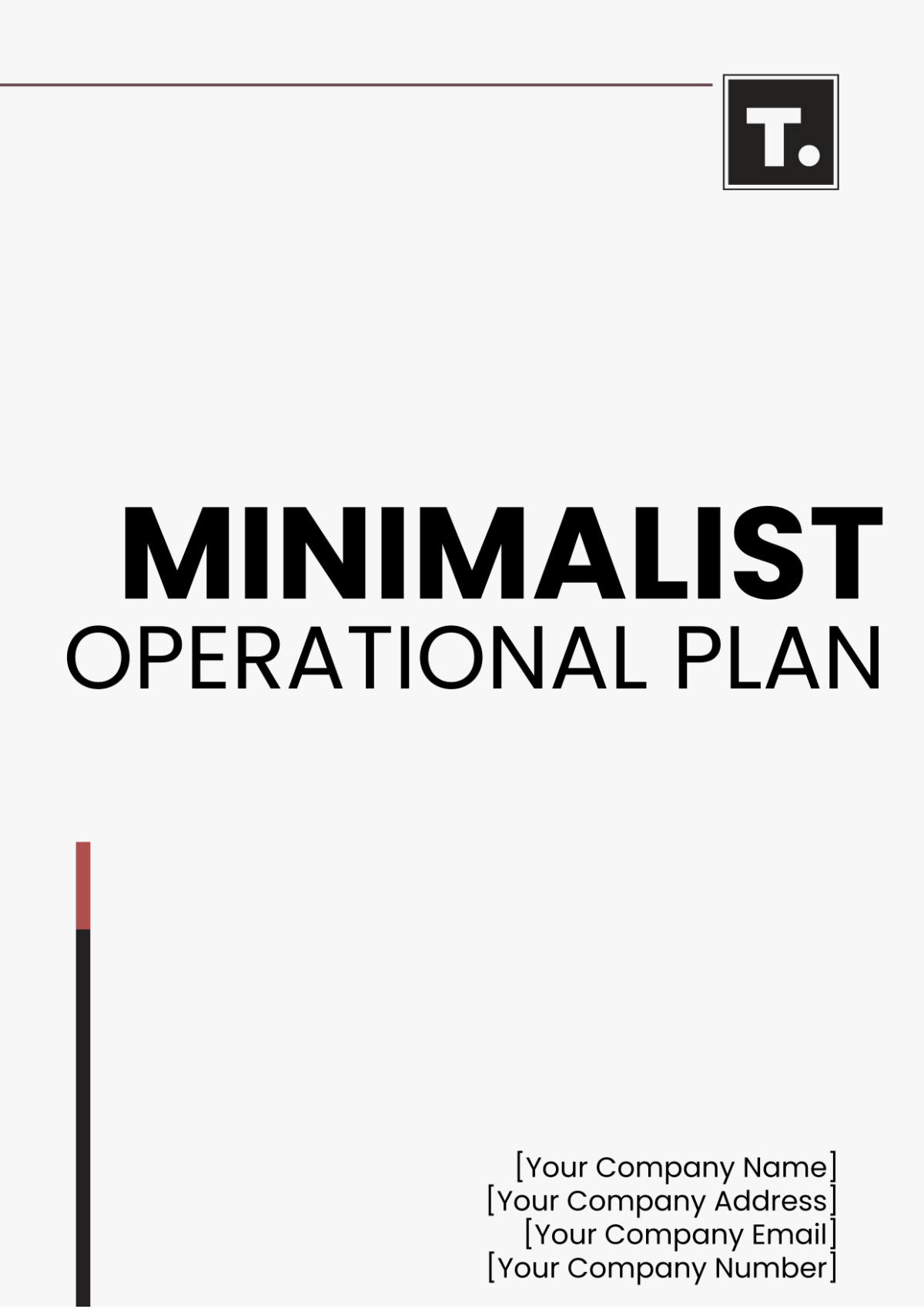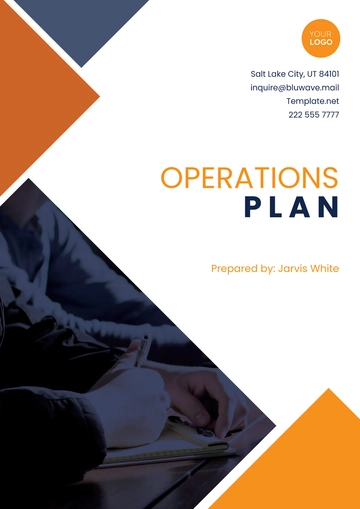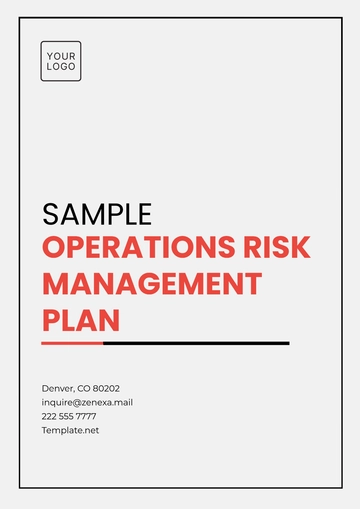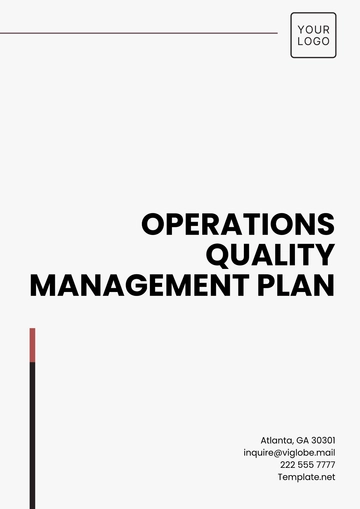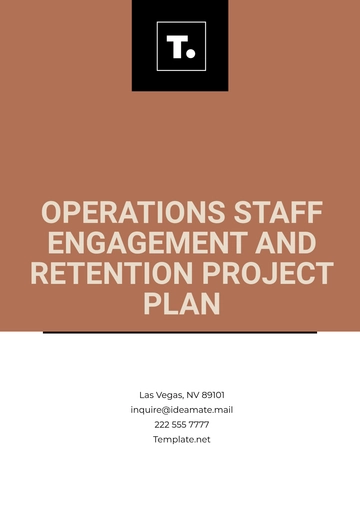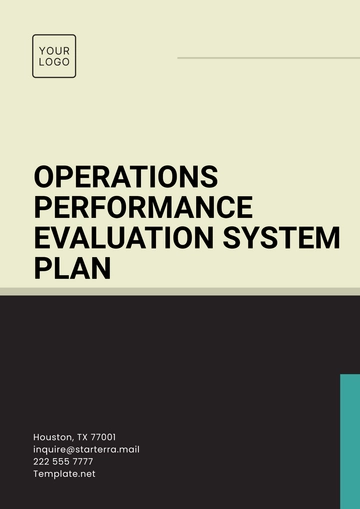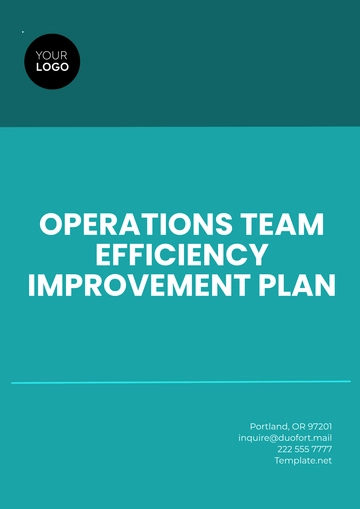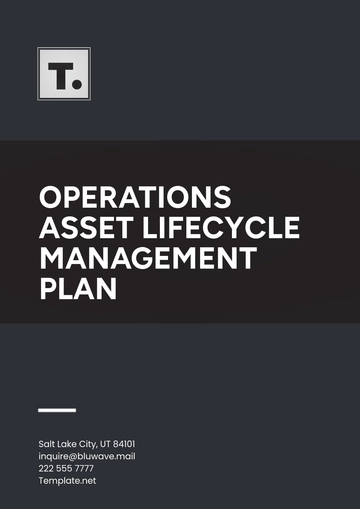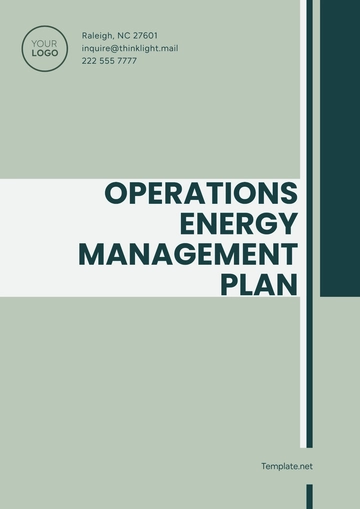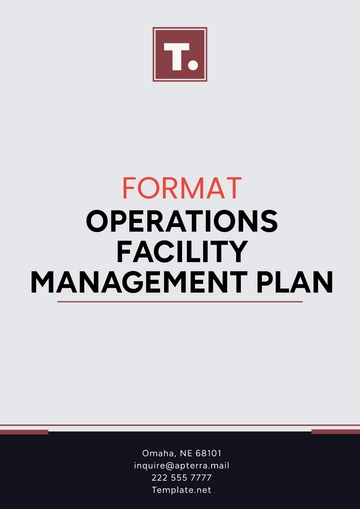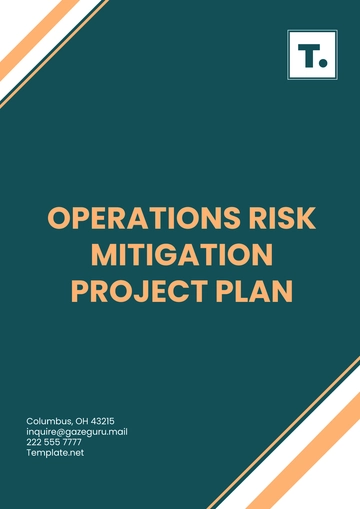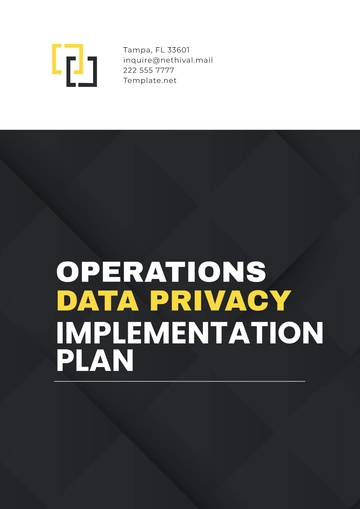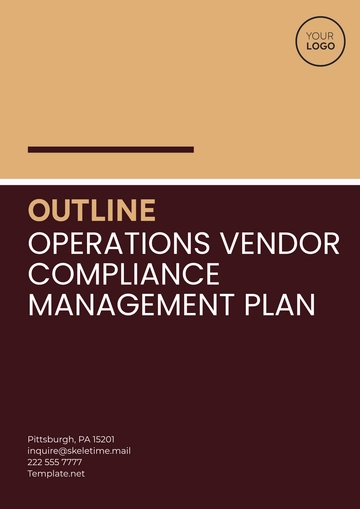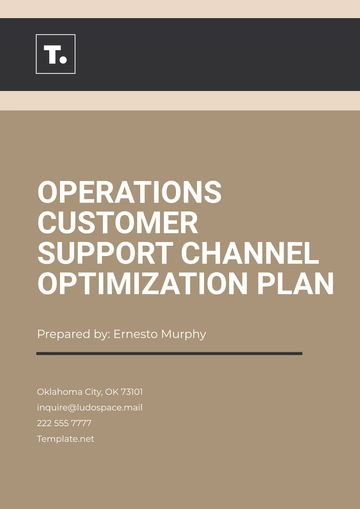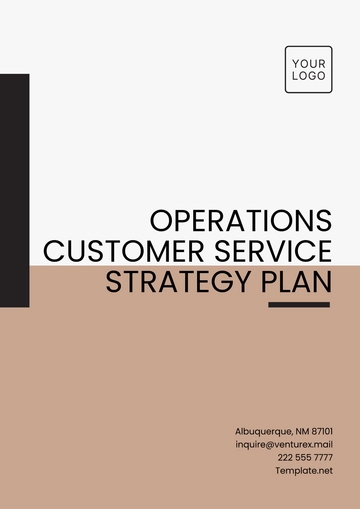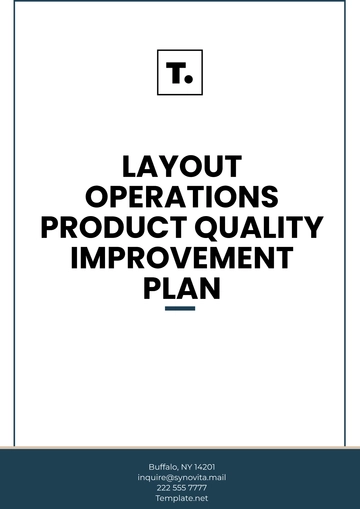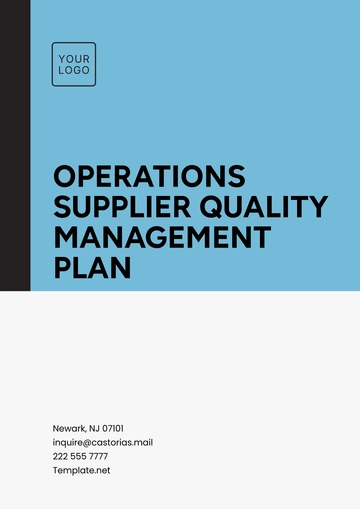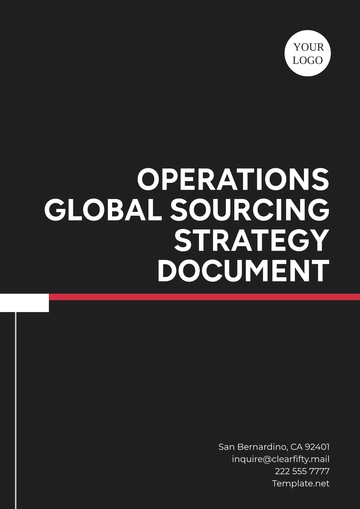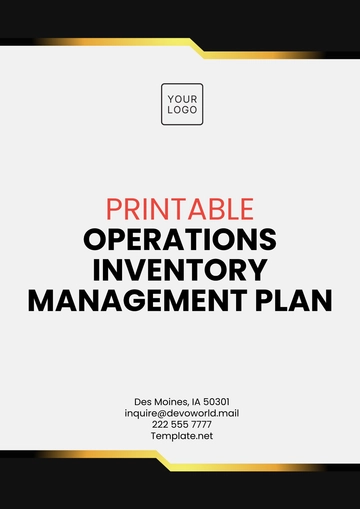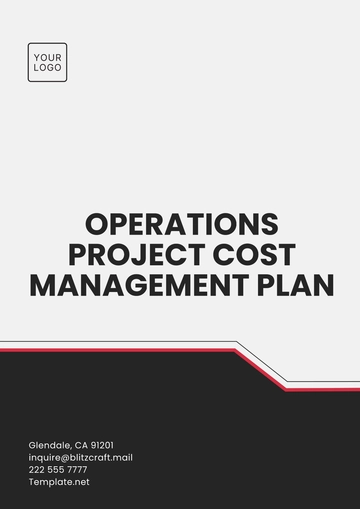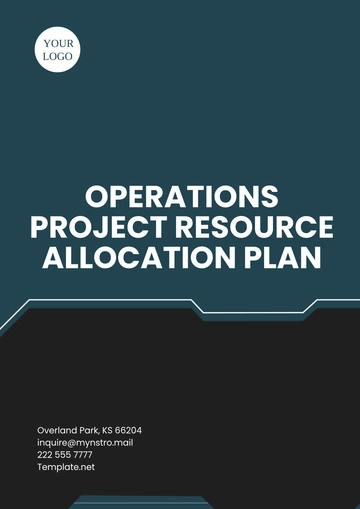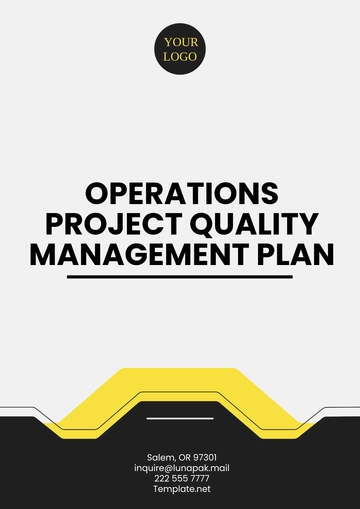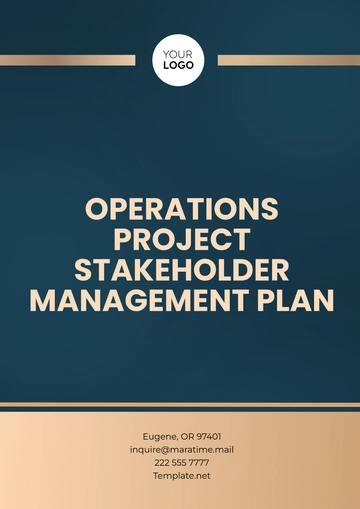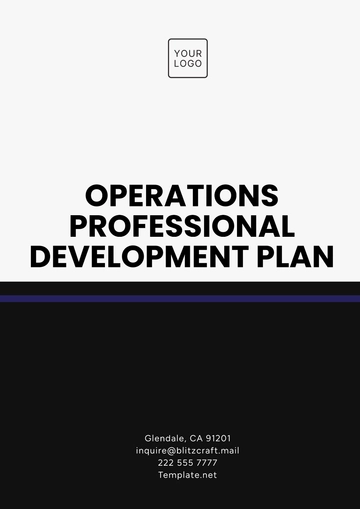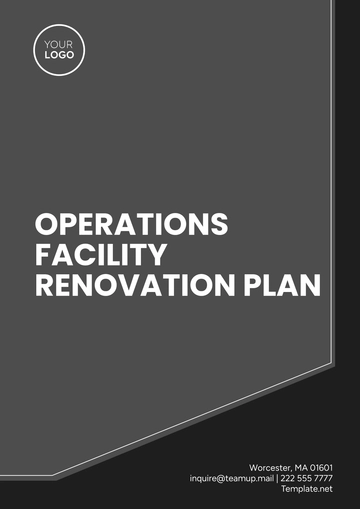Minimalist Operational Plan
I. Executive Summary
The Minimalist Operational Plan outlines the essential strategies and tactics to achieve operational objectives efficiently and effectively. This concise plan provides a streamlined framework for guiding daily activities and ensuring alignment with organizational goals.
II. Objectives
The primary objectives of the Minimalist Operational Plan are:
Increase market share by 15% within the next two years.
Improve customer satisfaction ratings to 90% by the end of the fiscal year 2052.
Streamline operational processes to reduce costs by 10% by 2053.
III. Key Strategies
A. Market Expansion
B. Customer Experience Enhancement
C. Operational Efficiency
IV. Action Plan
A. Market Expansion
Conduct market research to identify untapped segments. (Due Date: March 2050)
Develop personalized marketing strategies for each target demographic. (Due Date: June 2050)
B. Customer Experience Enhancement
Launch customer satisfaction survey program. (Due Date: April 2050)
Provide ongoing training sessions for frontline staff. (Due Date: May 2050)
C. Operational Efficiency
Evaluate current processes for automation opportunities. (Due Date: July 2050)
Implement software solutions for supply chain optimization. (Due Date: September 2050)
V. Resource Allocation
The allocation of resources for the Minimalist Operational Plan includes:
Human Resources: 20 staff members dedicated to plan implementation.
Financial Resources: A Budget of $500,000 was allocated for marketing and technology investments.
Material Resources: Procurement of new software tools to support operational improvements.
VI. Monitoring and Evaluation
Regular monitoring and evaluation will be conducted to track progress and make adjustments as necessary. Key performance indicators (KPIs) include:
VII. Risk Management
Identified risks and mitigation strategies:
VIII. Communication Plan
Effective communication channels will be established to ensure all stakeholders are informed and engaged throughout the implementation process.
IX. Financial Projections
Year | Revenue (USD) | Expenses (USD) | Profit (USD) |
|---|
2050 | $2,000,000 | $1,500,000 | $500,000 |
2051 | $2,500,000 | $1,700,000 | $800,000 |
2052 | $3,000,000 | $1,800,000 | $1,200,000 |
X. SWOT Analysis
Strengths | Weaknesses |
|---|
- Strong brand | - Limited market reach |
- Innovative products | - High production costs |
Opportunities | Threats |
|---|
- Emerging markets | - Intense competition |
- Technological advancements | - Economic downturns |
Plan Templates @ Template.net
